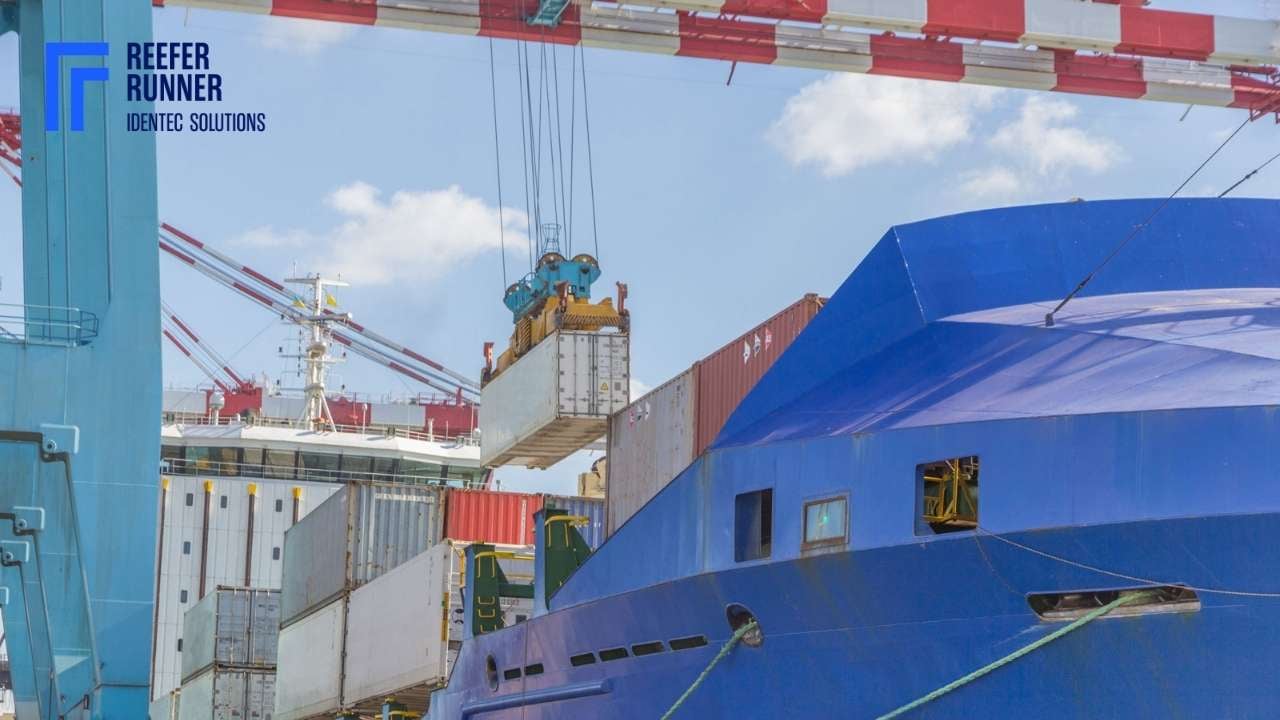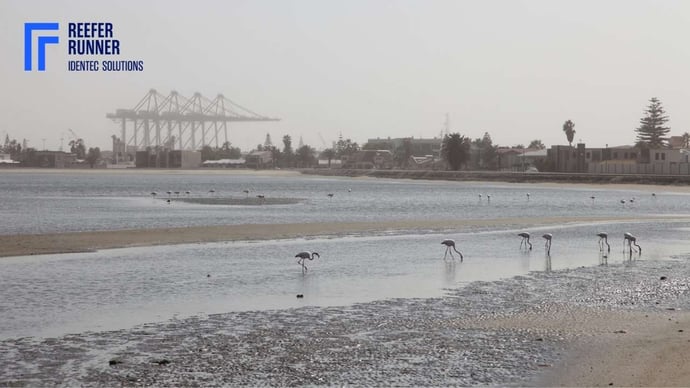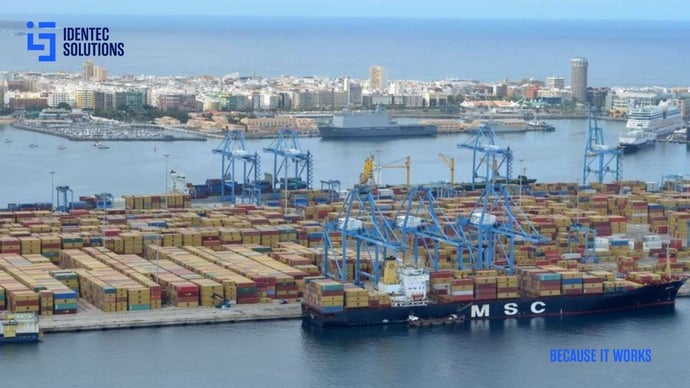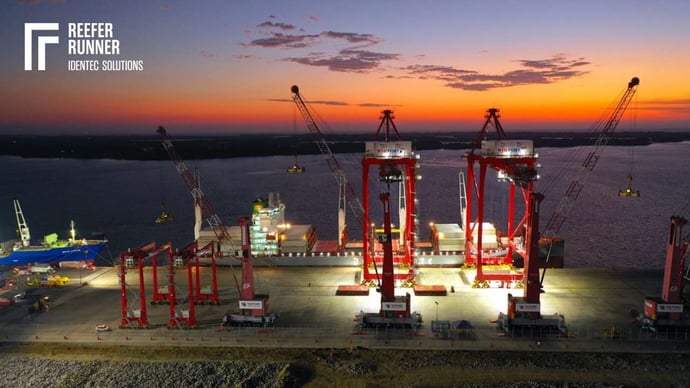Sabah Ports chooses Reefer Runner
| Written by Joshua Chan

No video selected
Select a video type in the sidebar.
Reefer Runner by IDENTEC SOLUTIONS, the world's most advanced terminal-based wireless Reefer monitoring and management solution was awarded a contract with Sabah Ports Sdn Bhd.SPSB is committed to positioning the Sepangar Bay Container Port as the preferred regional transshipment hub to serve the BIMP-EAGA, Intra Asia t as well as fast-growing cold-chain markets in China, Korea and Japan. Currently handling over 300,000 TEUs (20-foot equivalent units) annually with a capacity of 500,000 TEUs, the port is set to increase its capacity to 1.25 million TEUs within two years. (1)
Joshua Chan, Vice President Asia Pacific, Marine & Ports of IDENTEC SOLUTIONS said, “In line with SPSB’s aspiration to position Sapangar Bay Container Port as a premier transhipment hub, IDENTEC will provide 24/7 automated monitoring of refrigerated containers, along with energy consumption data that will boost productivity, provide greater visibility and reliability.“
Over 250 reefer plugs will be installed in the current phase, along with a comprehensive service and maintenance program. As one of the pioneers using this technology in Malaysia, IDENTEC SOLUTIONS is proud to partner with SPSB as a service provider.
At IDENTEC SOLUTIONS we are engineering ideas to improve efficiency in the Industrial Internet of Things. Our wireless solutions keep people safe, make teams work better, deliver valuable insights and eliminate wastefulness - even in harsh environments. That's why the world's biggest and most productive ports, mines, energy operators, automotive suppliers and carmakers trust us to help them better utilise the resources they have.
FAQ
How Is Sabah Ports Sdn Bhd Transforming Logistics in East Malaysia?
Sabah Ports Sdn Bhd (SPSB), a subsidiary of Suria Capital Holdings Berhad, is revolutionizing logistics in East Malaysia through strategic initiatives and partnerships. Managing eight ports across Sabah, SPSB plays a critical role in regional trade, with Sapangar Bay Container Port (SBCP) positioned as the premier transshipment hub for the Brunei Darussalam-Indonesia-Malaysia-Philippines East ASEAN Growth Area (BIMP-EAGA).
In collaboration with DP World, SPSB is expanding SBCP’s handling capacity from 500,000 TEUs to 1.25 million TEUs by 2025. This includes investments in infrastructure, such as extending berth lengths and yard areas, alongside digitalization efforts to optimize workflows and enhance operational efficiency.
Sabah’s strategic location near major shipping routes and its rich natural resources further bolster its potential as a logistics hub. These advancements aim to reduce transit costs, improve connectivity, and catalyze economic growth, positioning Sabah Ports as a key player in Southeast Asia's logistics network.
Learn more about Reefer Runner, our reefer management solution.
Delve deeper into one of our core topics: Refrigerated containers
Glossary
The Brunei Darussalam–Indonesia–Malaysia–Philippines East ASEAN Growth Area (BIMP-EAGA) is a subregional economic cooperation initiative launched in 1994 to accelerate development in geographically remote and less-developed areas of its member countries. Covering 1.6 million square kilometers and home to 73 million people, BIMP-EAGA includes Brunei Darussalam, Indonesia's Kalimantan, Sulawesi, Maluku, and Papua provinces, Malaysia's Sabah, Sarawak, and Labuan, and the Philippines' Mindanao and Palawan. Its goals include boosting trade, tourism, and investments by facilitating cross-border movement of goods, services, and people. It focuses on connectivity, sustainable industries like agro-fisheries and green manufacturing, and leveraging private-sector-led growth for regional integration. (2)
The Industrial Internet of Things (IIoT) refers to the use of interconnected sensors, devices, and systems in industrial applications such as manufacturing, energy, transportation, and healthcare. By leveraging real-time data collection, analytics, and automation, IIoT enhances operational efficiency, productivity, and safety. It supports machine-to-machine (M2M) communication and integrates technologies like artificial intelligence and machine learning for predictive maintenance and process optimization. IIoT is a key component of Industry 4.0, driving innovation in industrial sectors while addressing challenges like security and interoperability. (3)
References:
(1) https://www.malaysiakini.com/announcement/735246
(2) http://mfa.gov.bn/PublishingImages/Pages/Brunei-Darussalam---Indonesia---Malaysia---The-----Philippines-East-ASEAN-Growth-Area---(BIMP-EAGA)/BEV2025%20(Final).pdf
(3) Jha, K.N., Tariq, M., Joshi, A., & Solanki, S. (2024): Industrial Internet of Things: Technologies, Design, and Applications. Routledge
Note: This article was updated on the 15th of April 2025
Related Articles
Related Product

SOLUTION: Reefer Runner for Marine & Ports
Talk to an expert
Fill out the form below and one of our experts will be in touch. Alternatively, visit our contact page.




